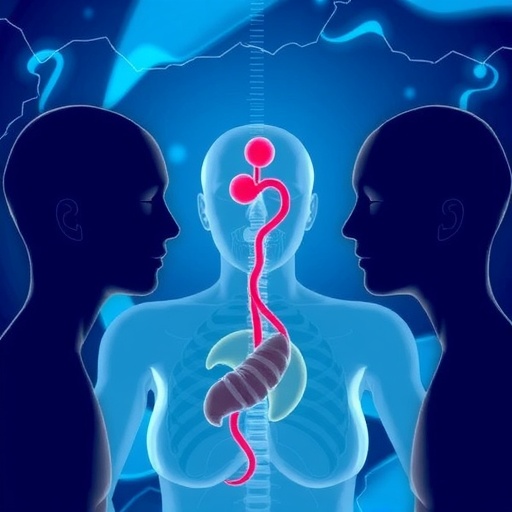Should blastocyst transfer still be encouraged in IVF clinics?
Vienna, 24 June 2019: The transfer of embryos cultured for five or six days (instead of two or three) after fertilisation in IVF and ICSI has become routine in many fertility clinics. Many (but not all) studies show that transferring these longer and better developed embryos – known as blastocysts – will increase the chance of pregnancy and live birth.(1)
However, concerns have been raised that this extended culture to the blastocyst stage may increase obstetric complications and increase perinatal risks. Some large studies have already shown slightly higher risks of preterm birth and large-for-gestational-age rates among infants born after blastocyst transfer than after transfer of traditional three-day embryos (or after natural conceptions).
Now, a study based on the large cohort of the Committee of Nordic ART and Safety (CoNARTaS) has confirmed these concerns and found that blastocyst transfer is indeed associated with a higher risk of preterm birth (before 37 weeks), and large-for-gestational-age rates. ‘These results are important,’ say the investigators, ‘since an increasing number of all ART treatments are performed with blastocyst transfer.’
The results of this large CoNARTaS study are presented today at the 35th Annual Meeting of ESHRE in Vienna by Dr Anne Laerke Spangmose from Copenhagen University Hospital in Denmark.
The study itself was an analysis of almost 90,000 assisted reproduction (ART) babies born in the Nordic countries (Denmark, Norway, Sweden) up to 2015 of which 69,751 were singletons and 18,154 twins. The singleton cohort comprised 8368 born after blastocyst transfer and 61,383 born after traditional (three day) embryo transfer; the twin cohort included 1167 children born after blastocyst transfer and 16,987 after three-day embryo transfer (at the ‘cleavage stage’).
The analysis showed that the singletons born after fresh blastocyst transfer had a 23% higher risk of being large for gestational age than after cleavage stage transfer. In everyday terms the higher risk would mean an overall increase in incidence from 3.7% following cleavage-stage transfers to 4.3% following blastocysts; Dr Spangmose described this increase as ‘small’. While another small increase in the risk of preterm birth was found following the transfer of frozen blastocysts, none was found after the transfer of fresh.
With a further objective, the study considered the chance of having twins following cleavage-stage or blastocyst transfer. Incidence was increased from 2.3% following the fresh day-three transfers to 4.0% following blastocyst, and at similar rates for frozen. ‘I would say that this a large increase,’ said Dr Spangmose, ‘considering the risks of perinatal and obstetric outcomes in twin births.’
The results suggest that blastocyst transfer does indeed carry a small but higher risk of obstetric complications than day-three transfers. The increased risk of large-for-gestational-age offspring has been reported in both human and veterinary studies.
Explaining the higher rate of large-for-gestational-age following blastocyst transfers Dr Spangmose said: ‘Extended embryo culture implies more time in vitro for the embryo, leaving it more exposed to external potential stressors like temperature or oxygen concentration. Furthermore, the type of culture media used for cleavage and blastocyst stage embryos are different. Studies have suggested that the media itself may influence specific gene expressions and impact perinatal outcomes.'(1)
However, despite these higher obstetric and twin risks, other meta-analyses have found that blastocyst transfer is associated with a higher delivery rate than cleavage-stage transfers – which no doubt explains its increasingly greater use in recent years. The latest Cochrane review (2016) of blastocyst vs cleavage stage transfer found the former associated with a 48% higher chance of live birth in an initial ‘fresh’ transfer cycle. The Cochrane results mean – as the reviewers explained – that if 29% of women achieved live birth after fresh cleavage stage transfer, between 32% and 42% would do so after fresh blastocyst transfer. Regulatory authorities have recognised this in their encouragement of single embryo transfer to reduce multiple pregnancy rate, still the greatest ‘complication’ of ART. Embryos which reach the blastocyst stage have been said to be more ‘physiological’ and thus better able to select themselves for viability.(2)
‘Today,’ said Dr Spangmose, ‘blastocyst culture plays a crucial role in ART treatment. It increases survival rates of frozen-thawed embryos and so supports the use of single embryo transfer to reduce twin births. From our results the greater use of frozen blastocyst transfer could offset the adverse effects of extended embryo culture. Nevertheless, we still believe that blastocyst culture should be used with caution – as a tool for embryo selection and for enhancing success rates in frozen ART cycles. But we still need to consider whether blastocyst culture should be the gold standard in fresh ART cycles given the adverse risks found in our study.’
###
Abstract O-035, Monday 24 June 2019
Obstetric and perinatal risks in 8,368 singletons and 1,167 twins conceived after fresh and frozen blastocyst transfers in the Nordic countries – a CoNARTaS collaboration
Background notes
1. See Kleijkers SH, van Montfoort AP, Smits LJ, et al. IVF culture medium affects post-natal weight in humans during the first 2 years of life. Hum Reprod 2014; 29: 661-669.
2. These studies have been reviewed by the Cochrane collaborators. See Cleavage stage versus blastocyst stage embryo transfer in assisted reproductive technology ( https:/
* When obtaining outside comment, journalists are requested to ensure that their contacts are aware of the embargo on this release.
For further information on the details of this press release, contact:
Christine Bauquis at ESHRE
Mobile: +32 (0)499 25 80 46
Email: [email protected]
Media Contact
Christine Bauquis
[email protected]




